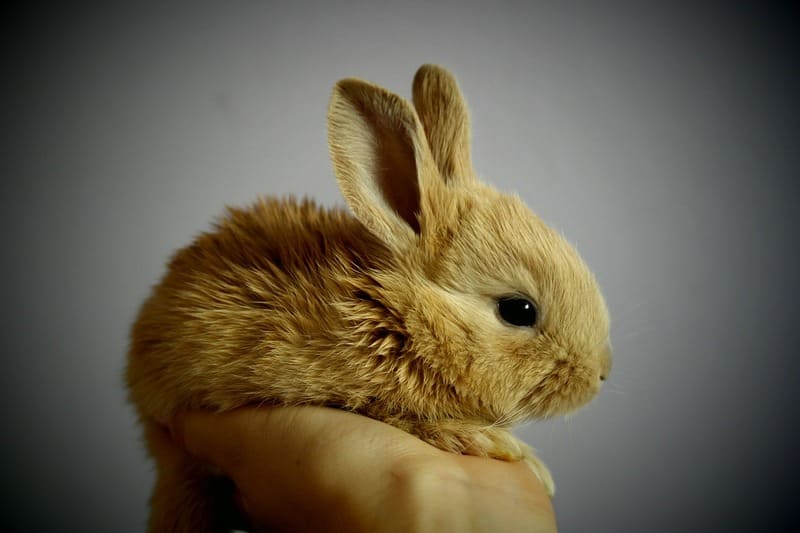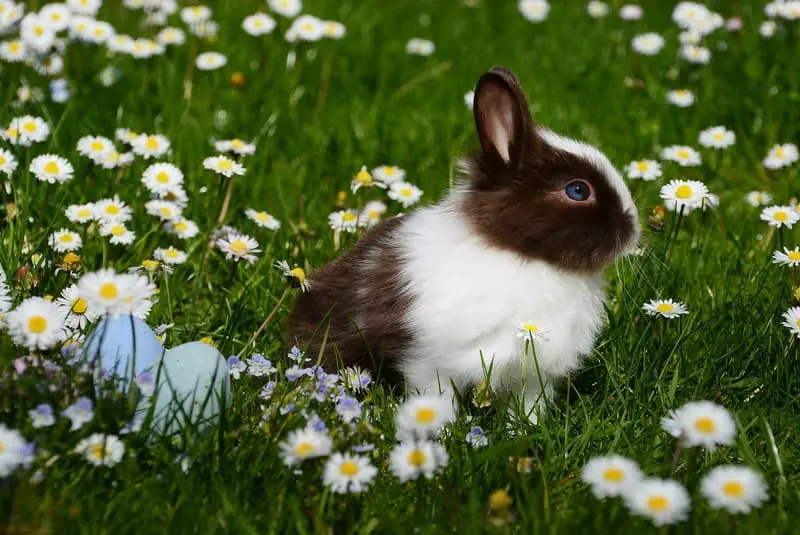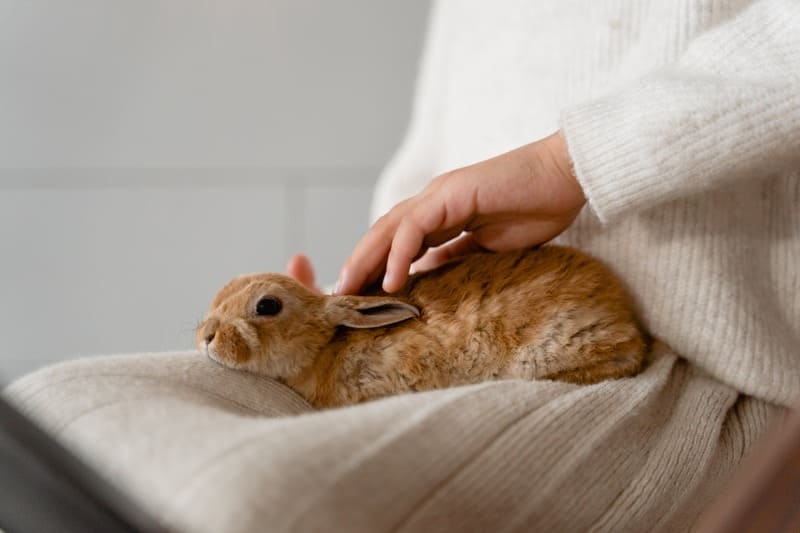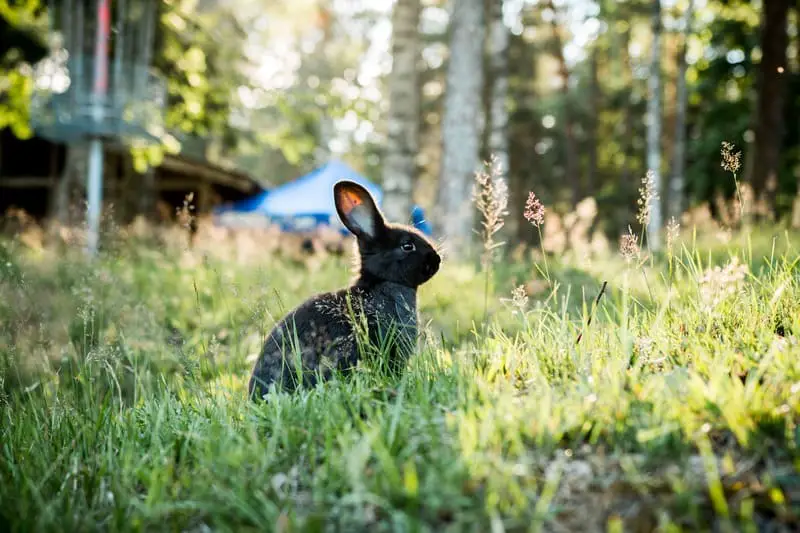Just like any other pet, rabbits require proper care and attention to ensure they live a happy and healthy life. One often-overlooked aspect of rabbit care is nail trimming. Many rabbit owners may wonder, “Do you need to clip your rabbit’s nails?” The answer is a resounding “yes.” In this comprehensive guide, we will explore the reasons why nail clipping is essential for your rabbit’s well-being, the techniques and tools required, and the best practices to ensure a safe and stress-free experience for both you and your furry friend.

Why Is Nail Clipping Necessary for Rabbits?
Nail clipping is an essential aspect of rabbit care for several reasons. Neglecting your rabbit’s nail maintenance can lead to various health and comfort issues. Let’s explore these reasons in detail:
- Overgrowth and Curling: A rabbit’s nails are continually growing, just like those of humans and other animals. If left unattended, a rabbit’s nails can grow too long, leading to curling. Overgrown and curled nails can be painful and uncomfortable for the rabbit, potentially causing deformities in their feet or making it difficult for them to walk and hop.
- Injury Prevention: Long and sharp nails can cause injuries to your rabbit, to you, and to other pets they may interact with. Rabbits often use their powerful hind legs for digging, playing, and sometimes, in defense. If their nails are too long and sharp, they can inadvertently scratch themselves or their owners, leading to painful cuts or puncture wounds.
- Infection Risk: When nails become excessively long, they are more prone to collecting dirt, feces, and debris. This can create an environment for bacterial and fungal infections, potentially causing discomfort and health issues for your rabbit. Infections in the paws can be painful and challenging to treat.
- Improving Mobility: Rabbits are agile creatures, and their ability to hop and run is vital to their overall well-being. Long nails can interfere with their mobility, making it challenging for them to navigate their environment. This can lead to muscle atrophy and reduced exercise, which in turn can result in obesity and other health problems.
- Preventing Damaged Furniture: If your rabbit’s nails are too long, they can cause significant damage to furniture, flooring, and other household items. Rabbits may dig or scratch to keep their nails naturally trimmed, but without proper care, this can result in costly property damage.
Given these compelling reasons, it is clear that regular nail trimming is necessary for the well-being and comfort of your pet rabbit. Now that we understand the importance of nail care, let’s delve into the practical aspects of how to trim a rabbit’s nails.
How to Trim Your Rabbit’s Nails
Trimming your rabbit’s nails may seem like a daunting task, especially if you’re a first-time rabbit owner. However, with the right techniques and a calm and patient approach, you can ensure a safe and stress-free nail trimming experience for both you and your rabbit. Here’s a step-by-step guide on how to trim your rabbit’s nails:
1. Gather the Necessary Supplies:
- Nail clippers designed for small animals (avoid using human nail clippers)
- Styptic powder or a styptic pencil to stop bleeding in case of accidental cuts
- A towel or blanket to help secure your rabbit
- A small flashlight to see the quick of the nail (optional)
2. Choose the Right Time:
- Rabbits are often most active during the evening and early morning, so choose a time when your rabbit is relatively calm.
- Ensure there are no distractions or loud noises in the environment.
3. Prepare Your Rabbit:
- Sit on the floor or a comfortable, non-slippery surface with your rabbit.
- Use a towel or blanket to wrap your rabbit gently, leaving their head and one paw exposed.
- Be gentle but firm in your approach to avoid stressing your rabbit.
4. Examine the Nails:
- Use a small flashlight to help identify the quick (the pinkish or reddish portion of the nail that contains blood vessels). Be cautious not to cut into the quick, as it can be painful and cause bleeding.
5. Begin Trimming:
- Start with one nail at a time. Gently press the rabbit’s paw pad to extend the nail.
- Hold the clippers perpendicular to the nail and make a quick, clean cut, being careful to avoid the quick.
- If you’re unsure about the location of the quick, trim a small portion of the nail and observe the color. The quick is usually visible as a pinkish area within the nail. Avoid cutting into this area.
6. Monitor for Bleeding:
- If you accidentally cut the quick, apply styptic powder or a styptic pencil to stop the bleeding. You can also use a clean cloth to apply gentle pressure to the nail until the bleeding stops.
7. Repeat for Each Nail:
- Continue this process for all the nails, one at a time.
- Be patient and take breaks if your rabbit becomes agitated. It’s essential to maintain a calm and positive atmosphere.
8. Reward and Comfort:
- After you’ve finished trimming your rabbit’s nails, offer them a treat and plenty of cuddles to reassure them and make the experience positive.
9. Regular Maintenance:
- Keep a schedule for nail trimming, as the rate of nail growth can vary from rabbit to rabbit. On average, you may need to trim your rabbit’s nails every 4-6 weeks.
10. Seek Professional Help If Needed:
- If you’re unsure about trimming your rabbit’s nails or if your rabbit’s nails are exceptionally long or thick, consider seeking assistance from a veterinarian or a professional groomer.

Tips for Successful Rabbit Nail Trimming
To ensure a smooth and stress-free nail trimming experience for both you and your rabbit, consider the following tips:
- Practice Patience: Nail trimming can be stressful for rabbits, especially if they are not accustomed to it. Be patient and calm throughout the process, and take breaks if needed.
- Use the Right Tools: Invest in high-quality nail clippers specifically designed for small animals. Human nail clippers can cause splintering and discomfort.
- Start Early: If possible, introduce nail trimming to your rabbit at a young age. This can help them become accustomed to the process and make it less stressful as they grow older.
- Positive Reinforcement: Reward your rabbit with treats and affection after each successful nail trimming session. This positive association can make future sessions more comfortable.
- Know the Anatomy: Familiarize yourself with your rabbit’s nail anatomy, particularly the location of the quick. Being able to identify it will help you avoid cutting it.
- Lighting Matters: Good lighting can help you see the quick and avoid any accidents. A small flashlight can be handy for this purpose.
- Seek Professional Help When Unsure: If you’re uncomfortable or unsure about trimming your rabbit’s nails, consult with a veterinarian or a professional groomer for guidance and assistance.
- Keep a Steady Hand: When cutting the nail, be confident but gentle in your approach. A steady hand can help make precise cuts and reduce the risk of accidents.
Common Challenges and Solutions
While rabbit nail trimming is generally a straightforward process, there can be some challenges that rabbit owners may encounter. Here are some common issues and their solutions:
1. Nervous or Aggressive Behavior:
- Some rabbits may become anxious, agitated, or even aggressive during nail trimming. In such cases, it’s crucial to maintain a calm and patient demeanor. You can also try using a second person to help restrain the rabbit, or consider wrapping them in a towel to keep them still.
2. Clear Nails:
- In some rabbits, the nails may be nearly transparent, making it difficult to see the quick. In such cases, you should trim only a small amount of the nail at a time to avoid cutting the quick.
3. Bleeding:
- Accidental cuts can happen, leading to bleeding. If this occurs, apply styptic powder or a styptic pencil to stop the bleeding. Make sure you have these products on hand before you start trimming.
4. Split Nails:
- Occasionally, a rabbit’s nail may split or splinter during trimming. If this happens, consult your veterinarian for proper treatment.
5. Overgrown Nails:
- If your rabbit’s nails have become severely overgrown, they may require gradual trimming over several sessions to avoid cutting the quick. Seek professional assistance if the nails are too long or thick for you to manage safely.
6. Uncooperative Rabbits:
- Some rabbits simply do not tolerate nail trimming. If you find your rabbit becoming increasingly stressed or aggressive despite your efforts, it may be best to have a professional groomer or veterinarian handle the task.
7. Safety Precautions:
- Always be prepared with the necessary supplies and a plan for how to handle unexpected situations, such as sudden movements or escapes.

The Importance of Rabbit Grooming
Nail trimming is just one aspect of grooming for rabbits. In addition to maintaining their nails, it’s essential to address other grooming needs to keep your rabbit healthy and comfortable. Here are some aspects of rabbit grooming to consider:
1. Brushing: Depending on the breed, rabbits can have various types of fur, from short and smooth to long and dense. Regular brushing helps remove loose fur, prevent matting, and reduce the risk of fur ingestion, which can lead to gastrointestinal issues.
2. Dental Care: Rabbits’ teeth continually grow, so providing appropriate chew toys and hay is essential to keep their teeth worn down. Dental issues can arise if their teeth become overgrown, leading to pain and eating difficulties.
3. Ear Cleaning: Some rabbit breeds are more prone to earwax buildup, which can lead to ear infections. Regularly inspect and clean your rabbit’s ears as needed.
4. Bathing: Rabbits are generally good at grooming themselves, and baths are rarely necessary. However, if your rabbit gets into something dirty or has a medical condition requiring bathing, use a rabbit-safe shampoo and follow proper bathing procedures.
5. Eye Care: Check your rabbit’s eyes for signs of discharge, redness, or irritation. If you notice any of these issues, consult your veterinarian for guidance.
6. Anal Gland Expression: In some cases, rabbits may require anal gland expression, especially if they have difficulty grooming themselves in that area. This should be performed by a veterinarian or professional groomer.
Remember that each rabbit is unique, and their grooming needs may vary. Regular grooming sessions can also serve as a bonding experience between you and your pet.

Signs That Your Rabbit Needs Nail Trimming
Keeping a regular schedule for nail trimming is important, but it’s equally essential to recognize the signs that indicate your rabbit’s nails need attention between scheduled trimmings. Watch for these signs:
1. Clicking or Snagging: If you hear your rabbit’s nails clicking on hard surfaces or notice them getting snagged on fabric, it’s a clear sign that their nails are too long.
2. Overgrown or Curled Nails: Visually inspect your rabbit’s nails. If they appear overgrown or have started to curl, it’s time for a trim.
3. Difficulty Walking: If your rabbit is having trouble hopping or walking normally, it may be due to excessively long nails.
4. Paw Irritation: Rabbits may chew or bite at their paws if they experience discomfort from overgrown or sharp nails.
5. Unusual Behavior: Pay attention to any changes in your rabbit’s behavior, such as restlessness, increased grooming, or signs of pain. These may be indicative of nail-related discomfort.
6. Furniture or Clothing Damage: If your rabbit is causing damage to furniture or clothing with their nails, it’s a clear sign that their nails need attention.
Regularly checking your rabbit’s nails and being mindful of these signs can help you address their grooming needs in a timely manner, ensuring their overall comfort and well-being.
Final Thoughts on Rabbit Nail Care
Rabbit nail trimming is a fundamental aspect of caring for your pet, promoting their health, comfort, and well-being. With proper technique, the right tools, and a gentle approach, you can provide your rabbit with a positive nail trimming experience.
Remember that the process of nail trimming, as well as overall grooming, can also be an opportunity for bonding with your rabbit. By approaching these tasks with patience and care, you strengthen the trust and connection between you and your beloved pet.
If you’re unsure about any aspect of rabbit nail care or grooming, don’t hesitate to consult with a veterinarian or seek guidance from experienced rabbit owners. Your rabbit’s health and happiness are worth the effort and attention required to maintain their grooming needs, including regular nail trimming. By doing so, you’ll ensure that your furry friend continues to hop, play, and thrive as a cherished member of your family.
